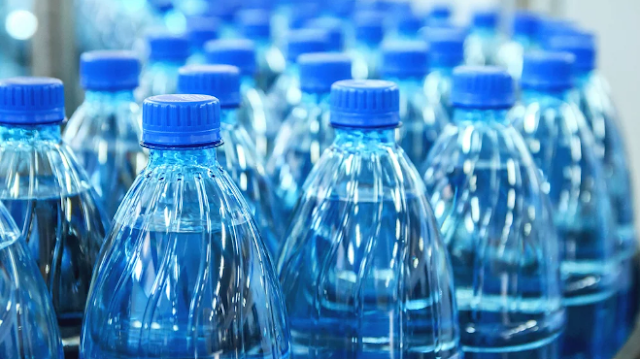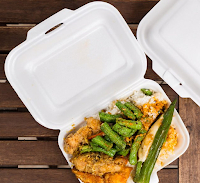Problems that Plastics Pose: What does the number in the triangle suggest?
Plastic Plastic Every where..
A challenge – count the number of plastic items that are
there around you and at your place(in your fridge). A lot – and you know it.
Maharashtra banned plastic – a great move, appreciated by many – but did you
ban it from your life? Its ubiquitous – and we know it. But we can choose a
good quality plastic to avoid its harmful effects – especially the ones which
we use to store food items and juices and of course Water bottles - now that’s
in our control.
A Good quality plastic – does it exist? Well ever wondered
about what the number in that small ‘recycle’ triangle stands for? For those
who don’t know – here is a little sneak peak.
Here are the
seven standard classifications for plastics.
No.1 - PET (Polyethylene Terephthalate)
Found in: Soft drinks, soda, beer and water bottles, ovenable food trays,
salad dressing, vegetable oil containers, peanut butter containers, medicine containers and
mouthwash bottles.
Remember using
2ltr pepsi or coke bottles as water bottles for a prolonged period? Its time you change
your habits. Research papers published worldwide have shown that, longer the
bottle is on the shelf or exposed to heat/sunlight, more the concentration of
chemicals that leach into the product.
It is intended for single use applications, repeated use increases the risk of leaching and bacterial growth. This plastic
is difficult to decontaminate, and proper cleaning requires harmful chemicals.
It may leach carcinogens.
It is
commonly considered safe as it poses a low risk of leaching. But it allows
bacteria to accumulate. Products made of no.1 (PET) plastic should be
recycled but not reused.
No.2 - HDPE (High-Density Polyethylene)
 Found in: Containers for: laundry/dish detergent, milk,
shampoo, conditioner, also various toys, grocery bags, milk jugs, oil
bottles, cereal box liners, butter and yogurt tubs.
Found in: Containers for: laundry/dish detergent, milk,
shampoo, conditioner, also various toys, grocery bags, milk jugs, oil
bottles, cereal box liners, butter and yogurt tubs.
HDPE
plastic is
considered one of the safest forms of plastic.
Products made of HDPE are reusable and
recyclable. It is one of the three plastic types considered safe due to
lower risk of leaching.
No.3 – PVC (Polyvinyl Chloride)
Found
in: Clear plastic food wrapping, cooking oil bottles, teething rings,
children’s and pets’ toys, and blister packaging for myriad consumer products,
the sheathing material for computer cables, plastic pipes, in garden
hoses, window frames.
PVC is
dubbed the “poison plastic” because it contains numerous toxins which it can
leach throughout its entire life cycle.
PVC products should not be reused for applications with food or for
children’s use. It is considered highly dangerous to cook items or store them in these plastics.
These plastics
may contain phthalates, which are linked to numerous health issues ranging from
developmental problems to miscarriages. They also contain DEHA, which can be carcinogenic with
long-term exposure. DEHA has also been linked to loss of bone mass and liver
problems. Don’t cook with or burn this plastic.
No.4 – LDPE (Low-Density Polyethylene)
Found
in: Shrink wraps, dry cleaner garment bags, squeezable bottles, and the type of
plastic bags used to package frozen food & bread, plastic grocery bags as well as in
“paper’’ milk cartons and hot/cold beverage cups
LDPE is
considered less toxic than other plastics, and relatively safe for use. Products
made using LDPE plastic are reusable, but not always recyclable
No.5 – PP (Polypropylene)
Found
in: Disposable diapers, plastic bottle tops, yogurt containers, potato chip
bags, medicine bottles, straws, packing tape and
rope.
Polypropylene
is recyclable & is considered safe for reuse.
No.6 – PS (Polystyrene)
Found in: Disposable styrofoam
drinking cups, take-out food containers, aspirin bottles, 5 gallons water jugs, meat trays, egg cartons, picnic disposable cutlery, foam packaging
Beaches
all over the world have bits of polystyrene lying at the shores, and numbers of
marine species have consumed this plastic with immeasurable consequences to
their health. It is considered
bad for our environment and has been subject to local bans.
Polystyrene
may leach styrene, a possible human carcinogen, into food products (especially
when heated in a microwave). Chemicals present in polystyrene have been linked
with human health and reproductive system dysfunction.
Recycling
is not widely available for polystyrene products & should be avoided where
possible.
No.7 – Other (BPA, Polycarbonate and LEXAN)
All of the plastic resins that don’t fit into the other
categories are placed in the number 7 category.
 Found
in: Baby bottles, sippy cups, water cooler bottles and car parts, also in plastic
food containers often marked on the bottom with the letters “PC” by the
recycling label no.7.
Found
in: Baby bottles, sippy cups, water cooler bottles and car parts, also in plastic
food containers often marked on the bottom with the letters “PC” by the
recycling label no.7.
It has
the potential of leaching chemical into food or drink products. BPA is a
xenoestrogen, a known endocrine disruptor. This is a matter of huge concern as hot coffee
and tea available roadside are served in Polystyrene cups.
It is
best to avoid no.7 plastics, especially for children’s food.
To
Recapitulate,
- Plastics having symbols 2, 4, and 5 are considered to be safest in terms of human and animal consumption (for storage-don’t consume it).
- Avoid recycling symbols 3, 6, and 7. While Number 1 is considered safe, it is also best to avoid this plastic.
- Avoid heating your food in microwave kept in plastic containers, as higher temperature influences leaching of chemicals from container walls.
- Avoid drinking or storing water in PET/Plastic bottles in cars, as leaching increases due to exposure of sunlight and higher temperatures that is easily reached in closed cars.
- Deodorants and perfumes which contain fragrance should be avoided as they contain 'phthalates' which can be easily ingested through your skin into human body.
Plastics are part of our everyday life.While we can’t avoid all plastics, we can certainly avoid and limit the use of particular types for our overall well being.
Apologize for too much of gyan. You may find a lot of materials on the same topic. Toodles!
Apologize for too much of gyan. You may find a lot of materials on the same topic. Toodles!









Comments
Post a Comment